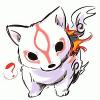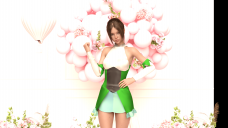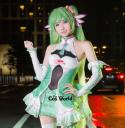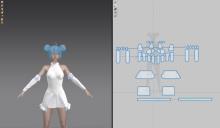Dress project; OBJ from MD9, Textures in daz3d format
 Ruris
Posts: 123
Ruris
Posts: 123
Hi all,
Totally clueless on this area, even though I have been 'playing' with Daz for a while.
1. What I understand so far, standard Daz product has some 2d 'gridlike' template, I think its called UV file? When a texture file 'overlap' on the grid, it will then transpose correctly on the dress/object. I did some Photoshop modification (put logo on shirt, etc) on these before, so I understood the outcome, but not how the UV file came to be created.
2. I assume I will need some sorta UV file output from the MD9. Havent figure out this part yet.
3. When I export the MD9 dress, its exported in the way on how I sew the pieces, if I create 50 pieces, I get 50 surfaces.
In certain situation, this is good as a shortcut to apply shader direct, but in more complex cloth, like the actual dress in the photo below, I can't cheat so much and need to shop some details in.
I think there is a way to group pieces together, I accidentally stumbled on it once.
4. Any help to plan some workflow is highly appreciated....
Thanks a lot.








Comments
It isn't actually a separate "UV file", it's UVmapping data incorporated into the mesh file you export from MD. I don't know if MD can generate the UV data itself, or if you'll need a separate program to do it. The last of your screenshots actually shows something similar to a proper UVmap layout, although there's way too much blank space in between the individual segments.
Note that there are a lot of different ways to lay out a UVmap, especially with clothes, and many of them will be "right" (a.k.a. there is no "one and only one true way" to do it).
There are a few other MD users on the forums here, one of them will probably turn up soon with a lot more help than I can give.
to set up UV tiles in MD, go to the UV Editor tab (top right) and arrange your pattern pieces so they fit into the UV squares. (Watch a youtube tutorial on MD's uv editor.)
to combine fabric pieces into materials, see enchated_april's guide in Marvelous Designer thread. Basically, you can group pattern pieces into 'surfaces' by assigning them unique Fabrics.